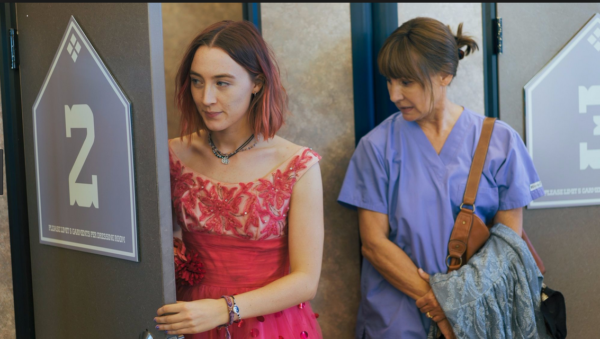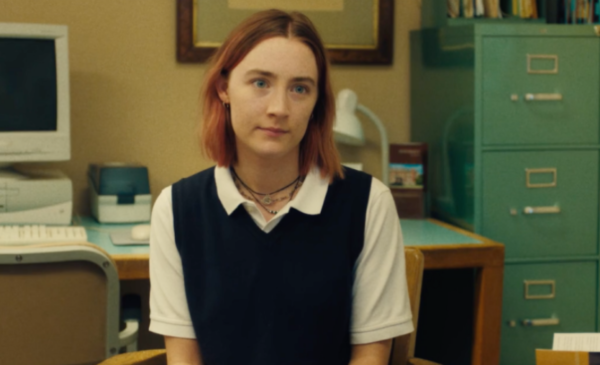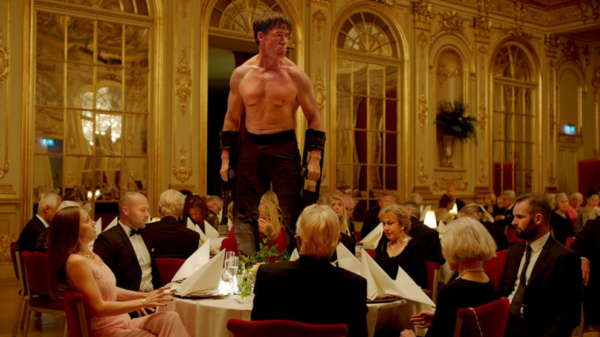In the new Swedish film The Square directed by Ruben Ostlund, Christian (Claes Bang ) is the hip and handsome chief curator of X-Royal, a major contemporary art museum so-named because it is set in a former royal palace. After being pickpocketed on the street, he does something quite stupid to get his phone back, so stupid that it is actually not plausible, given the personal risk. But it is not just this one dumb thing that makes this film about the art world so negligible, it’s a whole series of idiocies that make one question the underpinnings of this narrative. It’s all supposed to be funny, a satire, but satire’s power lies in its approaching the truth, and the things that happen in this film strain credulity.

Here are a few examples. In the opening sequence Christian is interviewed by an American reporter (Elizabeth Moss, in a thankless role)—and Bang is pretty good in fielding her questions with intelligence. So far so good. (The actor actually met some museum directors and studied art world interviews.) Then they meet up again at a drunken museum party, and end up sleeping together. Sorry, but reporters generally make it a rule NOT to sleep with their subjects. In fact, all the female characters are so underwritten as to be insulting—maybe except for Christian’s two young daughters from a previous marriage, but that’s okay, since they’re cute and appear briefly.

The museum has to promote a conceptual artwork called “The Square” and hires a young firm specializing in social media to do so—realistic enough. But then Christian absently gives them carte blanche to do what they want. They make a completely inappropriate advert, insulting everyone. Whoa, that would not happen at any midsized or major museum, where such decisions would have to go through a communications director/department and maybe even someone higher up. In another scene, a performance artist aping an ape invades a black-tie museum dinner—and starts to assault the guests. Can you imagine something like that happening at a LACMA or Hammer gala? Nope. A museum might present something transgressive, as MOCA did at a gala dinner several years ago, but actually touching, attacking the guests? No way. The scene lasts far too long, and it’s not that amusing.
Director Ostlund is taking potshots at the art world, and the art world is certainly a place where ridiculous things happen. But this film is for those predisposed to thinking that contemporary art is crap, artists are shysters, and anyone who works in this universe is morally challenged. The film won the Palme d’or at the Cannes film festival this year, but don’t let that prevent you from avoiding it.
Lady Bird
Those enchanted by the Irish actress Saoirse Ronan will find more reasons to be with the new film Lady Bird, in which she plays a rebellious teen in Sacramento circa 2002. Lady Bird is the name smart and sassy Caroline McPherson has given herself—she wants to assert her own identity, and escape what she sees as her relentlessly dull family and the burbs. Yes, this bird is ready to fly the coop.

At home she bickers with her beleaguered and controlling mother, Marion (Laurie Metcalf ), who’s very annoying but also remarkably sympathetic. Marion has had to take on two jobs because her husband has just lost his (and don’t you forget it, Caroline!), and she lives in fear that her daughter will lose her way—or get away. Outside the home Lady Bird acts out against her Catholic girls’ school education, dumps her best friend to befriend the Popular Girl, and dips her toes into dating, which promises adulthood and release but proves disappointing.
Throughout the film, zingers fall out of Lady Bird’s mouth with amazing naturalness and aplomb. “I want to go to the East Coast,” she tells her mother, who thinks she should go to a nice community college—when not serving time in jail. “I wanna go where culture is,” says Lady Bird, “like New York, or at least Connecticut or New Hampshire, where writers live.”

All of this has been hilariously penned by Greta Gerwig, who also directed—it’s her directorial debut, and a stunningly promising one. Gerwig is already well known for her on-screen appearances in such films as Francis Ha and 20th Century Women, and showed off her easy wit in a post-screening interview at LACMA last fall. Having worked in films for years, she already understood the filmmaking process, she said, and came to the first day on set “so prepared and over-prepared to make this movie.” While she grew up in Sacramento and went to an all-girls Catholic school, “In a way, I was the opposite of Lady Bird. I was a rule-follower—always coloring inside the lines.”

Fortunately, in filmmaking, Gerwig is a bit of a rule-breaker. For one thing, she was conscious of not wanting to make the romantic component of her heroine’s story the pivotal one, and instead filled Lady Bird’s life with family and friends, music and literature—and keen observation. “We often deny female characters more stories,” the director said. Reading the synopsis of the film you might think, I’ve seen this story before—rebellious teen, trying to grow up fast—but the multifaceted nature of Lady Bird, the intimacy and the truth of the performances and of the script, makes this film feel incredibly fresh and exhilarating. You will end up cheering for Lady Bird—and her mom, too.
Both films are currently in release.



















0 Comments